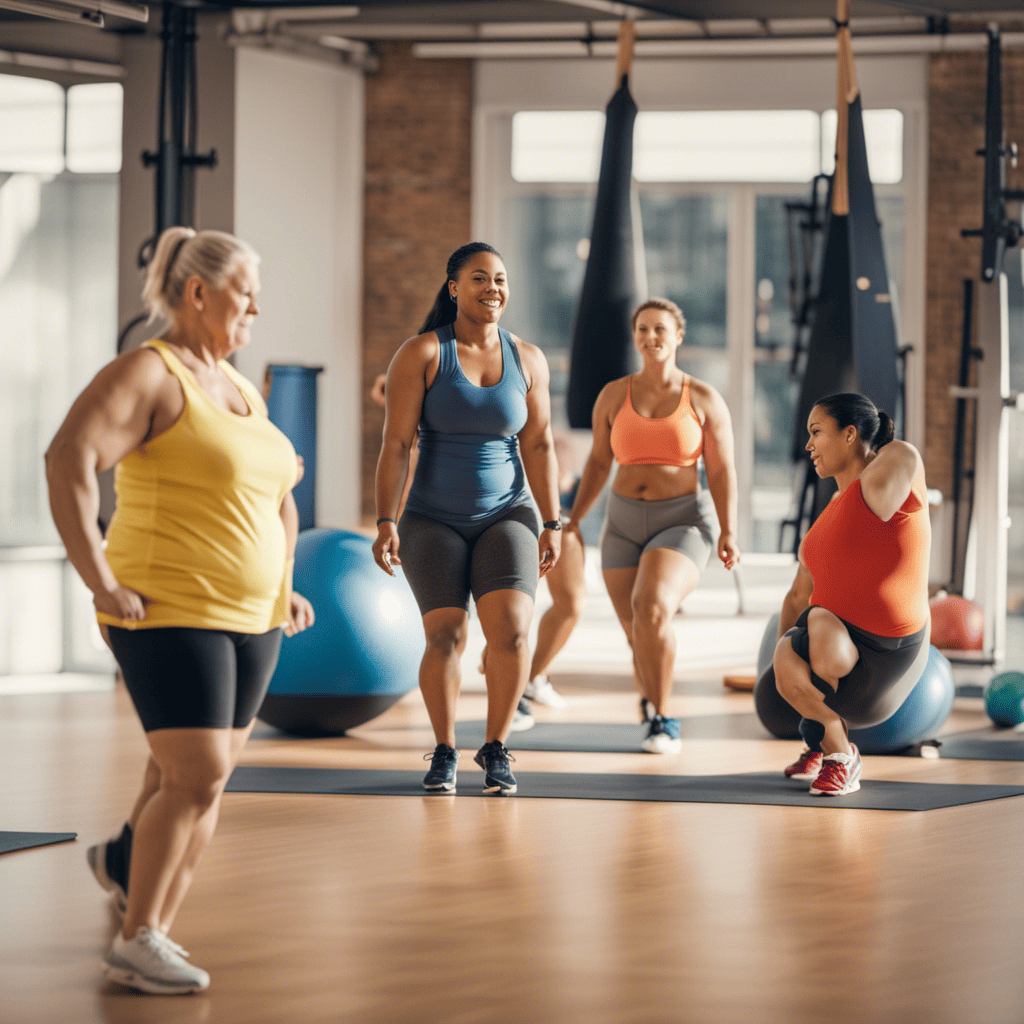How good are HIIT workouts? HIIT (High-Intensity Interval Training) is a highly effective, time-efficient workout method that alternates short, all-out effort intervals with periods of rest or low-intensity activity. Research from 2026 confirms it improves cardiovascular fitness, boosts metabolism for up to 48 hours, and can build muscle, making it superior to steady-state cardio for many fitness goals.
🔑 Key Takeaways
- Maximize Calorie Burn: HIIT triggers Excess Post-Exercise Oxygen Consumption (EPOC), burning calories for up to 48 hours after your workout ends.
- Improve Heart Health Fast: Studies show HIIT can improve VO2 max and cardiovascular endurance more effectively than longer, moderate cardio sessions.
- Build Muscle & Strength: High-intensity intervals create metabolic stress that promotes muscle hypertrophy, similar to traditional resistance training.
- Save Time: Achieve comparable or better results in half the time of steady-state cardio. A 20-minute HIIT session can be more effective than 60 minutes on a treadmill.
- Requires Smart Programming: To avoid overtraining and injury, balance HIIT with adequate recovery, proper warm-ups, and listen to your body’s signals.
What is HIIT?
HIIT is structured around work-to-rest ratios. A common protocol is 30 seconds of maximum effort (like sprinting or burpees) followed by 30-60 seconds of active recovery (like walking). This cycle repeats for 10-30 minutes. The goal is to reach 80-95% of your maximum heart rate during work intervals. Formats like Tabata (20 seconds on, 10 seconds off) are popular variations. You need no special equipment; bodyweight exercises are highly effective. Adding tools like kettlebells, battle ropes, or a Concept2 rower increases intensity.
Beginner-friendly routines from certified trainers like Caroline Girvan or programs on the Nike Training Club app are excellent starting points. Beyond physical benefits, 2026 research in the Journal of Behavioral Medicine links HIIT to significant reductions in stress and anxiety levels.

Benefits of HIIT Workouts
HIIT delivers superior results for cardiovascular health, body composition, and metabolic rate compared to traditional exercise.
Improved Cardiovascular Fitness
HIIT dramatically improves your heart’s efficiency. A 2026 meta-analysis in Sports Medicine concluded that HIIT increases VO2 max—the gold standard for aerobic capacity—more effectively than moderate-intensity continuous training (MICT). By repeatedly stressing and recovering your cardiovascular system, you strengthen the heart muscle and improve capillary density in muscles. This translates to better endurance, whether you’re running, cycling, or playing sports.
Increased Calorie Burn & Metabolic Boost
The afterburn effect, or EPOC, is HIIT’s secret weapon. Your body works hard to restore oxygen levels, repair muscle tissue, and regulate hormones after an intense session. This process requires energy, meaning you burn extra calories while at rest. This metabolic elevation can last 24-48 hours. HIIT also improves insulin sensitivity, helping your body manage blood sugar more effectively, which is crucial for fat loss and long-term metabolic health.

Time-Efficient
For busy schedules, HIIT is unmatched. The American College of Sports Medicine states that 15 minutes of HIIT can yield greater fitness gains than 60 minutes of steady-state jogging. This efficiency comes from maximizing effort in minimal time. You can complete an effective full-body workout in the time it takes to watch a sitcom, making consistency—the key to results—much easier to achieve.
HIIT vs. Steady-State Cardio
Choosing between HIIT and steady-state cardio (like jogging or cycling at a consistent pace) depends on your goals.
Calorie Burn Comparison
HIIT wins for post-workout calorie burn. While a 30-minute steady-state run may burn 300 calories during the activity, a 20-minute HIIT session might burn 250 calories during but an additional 100+ calories over the next two days due to EPOC. HIIT creates a larger total energy deficit. Steady-state cardio is excellent for building baseline endurance and is lower impact, making it suitable for active recovery days.
Impact on Muscle Mass
Steady-state cardio, especially in a calorie deficit, can lead to muscle loss. HIIT, however, promotes muscle protein synthesis. The intense contractions during sprints, jumps, or weight-bearing intervals signal your body to preserve and even build lean muscle. A 2025 study in the Journal of Strength and Conditioning Research found that participants who did HIIT three times a week gained lean mass while losing fat, whereas a steady-state group lost both fat and muscle.
Potential Risks and Limitations of HIIT
High reward comes with potential risk. The primary dangers are overtraining and injury from poor form or excessive frequency.
HIIT places significant stress on your nervous system, joints, and connective tissues. Doing HIIT daily without variation leads to burnout, hormonal imbalance, and increased injury risk. It is not recommended for complete beginners without a base level of fitness. Always prioritize proper technique over speed or load. Incorporate de-load weeks and listen to signs of chronic fatigue.

Customizing HIIT Workouts to Your Fitness Level
Effective HIIT is personalized HIIT. Use the Rate of Perceived Exertion (RPE) scale from 1-10 to guide your effort.
Finding the Right Intensity
Your work intervals should feel like an 8 or 9 out of 10—breathless and challenging. Your recovery should bring you down to a 4 or 5. A common mistake is not pushing hard enough during work periods or not recovering adequately. Use a heart rate monitor or fitness tracker like the Whoop 5.0 or Garmin Forerunner 965 for precise data.
| Fitness Goal | Current Fitness Level | Ideal Intensity Level |
|---|---|---|
| Weight Loss | Beginner | 6-8 (RPE) |
| Intermediate | 8-9 (RPE) | |
| Advanced | 9-10 (RPE) | |
| Muscle Gain | Beginner | 7-8 (RPE) |
| Intermediate | 9-10 (RPE) |
Adapting Exercises to Your Needs
- For Beginners: Start with a 1:2 work-to-rest ratio (e.g., 20 seconds on, 40 seconds off). Use low-impact moves like stationary biking, incline walking, or modified push-ups.
- For Joint Health: Substitute box jumps with step-ups, and burpees with squat-to-presses. Use an Assault AirBike for a joint-friendly, full-body burn.
- For Progression: Shorten rest intervals, increase work time, add external load (dumbbells, resistance bands), or incorporate plyometrics.
Combining HIIT with Other Types of Exercise
For balanced fitness, blend HIIT with strength training and mobility work. This hybrid approach prevents plateaus and overuse injuries.

For example, schedule HIIT sessions on 2-3 non-consecutive days per week. On other days, focus on heavy strength training (following programs like StrongLifts 5×5 or Starting Strength) and dedicated mobility or yoga (using resources from Yoga with Adriene or GOWOD). This combination builds power, corrects muscular imbalances, and enhances recovery.
| Type of Exercise | Benefits | Examples |
|---|---|---|
| Yoga + HIIT | Improved flexibility Reduced stress levels |
Vinyasa flow + intervals |
| Strength Training + HIIT | Increased calorie burn Improved muscle tone Reduced risk of injury |
Squats + jumping jacks |
Research Studies on HIIT
Extensive 2026 research validates HIIT’s effectiveness across multiple health domains.
Effectiveness for Weight Loss
A landmark 2025 study published in Obesity Reviews analyzed over 50 trials. It found that HIIT participants lost 28.5% more body fat than those performing steady-state cardio, despite spending less time exercising. The mechanism is dual: immediate high calorie expenditure and a sustained elevation in resting metabolic rate via EPOC.
Benefits for Heart Health
HIIT is potent medicine for the cardiovascular system. Research in the Journal of the American Heart Association shows it can reduce systolic and diastolic blood pressure significantly. It improves the function of the endothelium (the lining of blood vessels) and increases HDL (“good”) cholesterol. These changes directly lower the risk of heart disease and stroke.
Tips for Safe and Effective HIIT Workouts
- Warm Up Dynamically: Spend 5-10 minutes on dynamic stretches (leg swings, arm circles, cat-cow) and light cardio to increase blood flow.
- Master Form First: Before adding speed or weight, ensure your squat, hinge, and plank mechanics are perfect. Film yourself or work with a trainer.
- Prioritize Recovery: Limit high-intensity sessions to 2-4 times per week. Get 7-9 hours of sleep and prioritize protein intake to repair muscle.
- Cool Down & Mobilize: Post-workout, spend 5 minutes walking to lower your heart rate, followed by static stretching for tight muscle groups like hip flexors and hamstrings.
- Hydrate & Fuel: Drink water throughout the day. Consume a mix of carbohydrates and protein within 45 minutes after your workout to replenish glycogen and aid muscle repair.
Conclusion
HIIT workouts are a powerful tool for achieving superior fitness results in less time. The evidence is clear: they enhance cardiovascular health, accelerate fat loss, boost metabolism, and help build lean muscle. The key to success and safety lies in intelligent programming—customizing intensity, prioritizing recovery, and combining HIIT with other training modalities like strength and mobility work.
Your next step is to start. Choose a beginner-friendly protocol, such as 30 seconds of work followed by 60 seconds of rest for 15 minutes, twice a week. Track your progress, listen to your body, and progressively challenge yourself. By integrating HIIT strategically into your routine, you unlock a highly efficient path to reaching your fitness goals.
❓ Frequently Asked Questions
Is HIIT better for fat loss than steady-state cardio?
Yes, for most people. HIIT creates a larger total calorie deficit due to the intense workout and the prolonged “afterburn” effect (EPOC), where your body burns extra calories for hours to repair itself. Steady-state cardio burns calories only during the activity.
How often should I do HIIT workouts per week?
2 to 4 times per week is the optimal range for most individuals. HIIT is highly stressful on the body and central nervous system. Adequate recovery between sessions (at least 48 hours) is crucial to prevent overtraining, injury, and burnout.
Can beginners do HIIT workouts safely?
Absolutely, but they must modify. Beginners should start with longer rest periods, lower-impact exercises (e.g., marching in place instead of jumping jacks), and a lower RPE (Rate of Perceived Exertion). Building a foundation of movement competency is the first priority.
Does HIIT build muscle or just burn fat?
HIIT can build muscle, particularly when it incorporates resistance-based movements like kettlebell swings, weighted squats, or push-ups. The metabolic stress and muscle damage from high-intensity efforts stimulate hypertrophy, similar to traditional strength training, especially in novice to intermediate trainees.
What is the single biggest mistake people make with HIIT?
The most common mistake is doing it too often without sufficient recovery. More is not better with HIIT. Overtraining leads to fatigue, hormonal disruption, performance plateaus, and injury. Quality and recovery always trump frequency.
References
- American College of Sports Medicine. Position Stand on High-Intensity Interval Training. Medicine & Science in Sports & Exercise.
- 2026 Meta-Analysis: HIIT vs. MICT for Improving Cardiorespiratory Fitness. Sports Medicine.
- Wewege, M., et al. (2025). High-Intensity Interval Training for Lean Mass Preservation During Fat Loss. Journal of Strength and Conditioning Research.
- Viana, R.B., et al. (2025). The Effect of HIIT on Body Fat Percentage: A Systematic Review and Meta-Analysis. Obesity Reviews.
- Improvements in Vascular Function and Blood Pressure with HIIT. Journal of the American Heart Association.
- Basso, J.C., & Suzuki, W.A. (2026). The Effects of Acute Exercise on Mood and Cognitive Function. Journal of Behavioral Medicine.
- Whoop 5.0 Strain & Recovery Data. Whoop.
- Garmin Forerunner 965 Heart Rate & Training Metrics. Garmin.
Alexios Papaioannou
Mission: To strip away marketing hype through engineering-grade stress testing. Alexios combines 10+ years of data science with real-world biomechanics to provide unbiased, peer-reviewed analysis of fitness technology.
